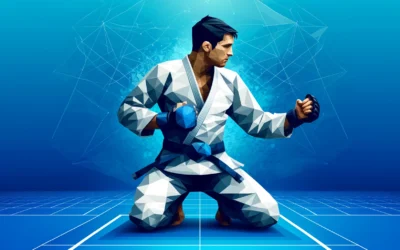Praise is a potent tool that martial arts instructors can utilize to motivate students, improve performance, and build confidence. When used correctly, praise reinforces proper behaviour, helps correct poor technique, and encourages students to keep improving. This article will explore the multifaceted nature of praise and provide instructors with actionable advice on using it effectively.
The Impact of Praise on Students
Praise motivates. Students who receive regular, genuine praise are more likely to accept corrections, listen to instructors, and keep trying to improve their skills. Even struggling students may perform better when praised.
Praise builds confidence. Sincere compliments make students feel competent, valued, and proud of their progress. This boosts their self-assurance, so they tackle new techniques with enthusiasm.
Praise encourages good behaviour. When an instructor praises correct posture, for example, surrounding students tend to fix their posture. They want the positive attention their peer receive.
Finding Occasions for Praise
Instructors should praise the little things. Compliment neat uniforms, reasonable effort, helpfulness, concentration, determination – anything worthy of acknowledgement.
Don’t just praise significant accomplishments. Small progress and daily victories matter. A white belt advancing an inch deeper into a stance deserves encouragement, too.
Catch students getting it right. Possessive praise by telling individuals what they’re doing correctly before making corrections. This cushion helps them accept critique.
Using the Praise Sandwich Technique
Sandwich corrections between compliments. First, praise is an element the student performs well. Then, suggest an improvement. Finally, praise them for making the change. This method allows efficient correction without damaging confidence.
For example, “Your punch form looks great! Rotating your hips on the follow-through will add power. Yes, much better! You drove through with your lower body.”
Avoiding the Pitfalls of Over-Praising
Don’t offer disingenuous praise. Students will see through fake compliments. Save praise for legitimate achievements, however small.
Avoid repetition. Find creative ways to acknowledge students. Expand your praise vocabulary so “good job” doesn’t lose all meaning.
Don’t just praise top students. Regularly acknowledge middle and bottom-tier performers, too. They likely need confidence boosts the most.
Adjusting Praise Style Based on Rank
Modify praise delivery based on experience. White belts require reinforcement and correction. Later, praise is mainly motivated by validating progress.
Novices need frequent, specific praise to develop proper technique. “Great job chambering before that punch – really textbook!”
Advanced students already grasp the basics, so compliments simply recognize their continuing effort. “I can see you put much work into smoothing your form.”
Involving the Entire Staff in Praising Students
Cultivate a culture of praise. Set expectations that all instructors regularly offer sincere compliments.
Train on praise methodology. Share guidelines so the team understands the motivation and impact of proper praise.
Discuss scenarios. Brainstorm appropriate praise responses to everyday classroom situations. What could an instructor say when a student finally perfects a problematic kick? How might praise ease tensions after correcting a teen’s behaviour?
Building Camaraderie Through Praise
Privately correct staff members when possible to preserve credibility. Publicly praise them to underscore unity.
Collaborate on a praise phrase bank. Custom compliments feel more meaningful than generic options that instructors might forget.
Trade observations after class. Did any students thrive today? Swap stories to spur fresh appreciation.
Send postcards highlighting stellar work ethic, kindness, and helpfulness. Mail deserves more impact than quick floor compliments.
Implementing an Effective Praise Practice
Martial arts instructors wield immense influence over students’ self-image and skills development. Purposefully integrating appropriate, empowering praise into training sessions and culture fosters incredible growth. What complementary strengths or weaknesses balance your praise abilities?
At Apex MMA in Brookvale, we incorporate this article’s ideas into all training phases. From beginner courses to advanced competition prep, we praise progress. We encourage students to enrol for a free 7-day trial to experience our supportive environment firsthand. The bonds forged through blood, sweat, and mutual celebration carry members to heights they never imagined. We can’t wait for you to join us!





0 Comments